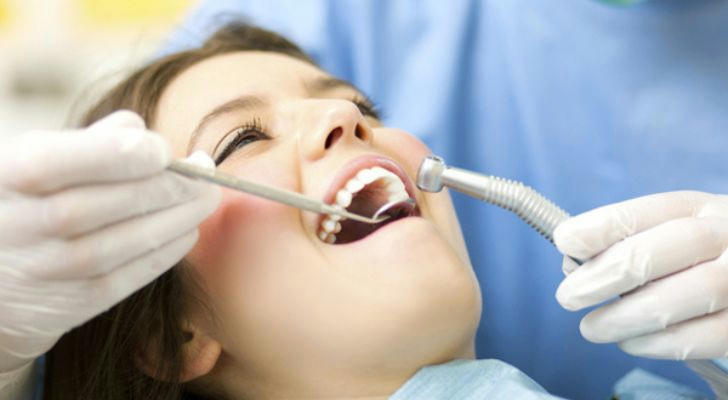The Economic Benefits of Dental Care in the U.S.: How to Save on Medical Expenses in 2025
Imagine a world where maintaining healthy teeth not only enhances your smile but also significantly reduces your financial burden. Dental care is often perceived as an expensive necessity, but it doesn’t have to be. By understanding the economic benefits of dental care, you can save hundreds or even thousands of dollars each year! This article explores the financial advantages of dental care, empowering you to take control of your oral health and your wallet.

Understanding the Basic Costs of Dental Care
Dental care encompasses a variety of services, each with its own cost structure. According to the American Dental Association (ADA), here are some common dental procedures and their average costs:
Routine Check-up and Cleaning: $75 to $200
X-rays: $25 to $250 (depending on the type and number)
Fillings: $150 to $300 per tooth
Root Canal: $500 to $1,500
Crowns: $800 to $2,000
Orthodontics (Braces): $3,000 to $7,000
These costs can vary significantly based on geographic location, the dentist's experience, and whether the patient has dental insurance. For instance, a routine check-up in a metropolitan area may cost more than in a rural setting.
Strategies to Reduce Dental Care Costs
1. Prioritize Preventive Care
Investing in preventive care can save money in the long run. The ADA reports that for every dollar spent on preventive services, patients can save up to $50 in future dental costs. Regular check-ups can help catch issues early, preventing the need for more expensive treatments.
2. Dental Insurance
Having dental insurance can significantly reduce out-of-pocket expenses. Many plans cover preventive care at 100% and offer partial coverage for major procedures. Patients should carefully review their options to find a plan that best suits their needs.
3. Flexible Spending Accounts (FSAs)
Utilizing an FSA .allows individuals to set aside pre-tax dollars for medical expenses, including dental care. This can lead to substantial savings over time, as contributions to an FSA reduce taxable income.
4. Discount Dental Plans
For those without insurance, discount dental plans can provide access to reduced rates at participating dentists. These plans typically charge an annual fee and offer discounts ranging from 10% to 60% on various dental services.
5. Shop Around
Patients should not hesitate to compare prices among different dental practices. Some clinics may offer lower rates for the same services, and many provide payment plans to help manage costs.
Steps to Apply for Dental Insurance or Discount Plans
Research Options: Start by researching available dental insurance plans or discount dental plans in your area. Websites like DentalPlans.com can help you compare options.
Check Eligibility: Ensure you meet the eligibility requirements for the plan you choose. Some plans may have waiting periods for certain services.
Enroll: Follow the enrollment process, which may involve filling out an application form and providing necessary documentation.
Understand Coverage: Familiarize yourself with what services are covered and any limitations or exclusions.
Schedule Appointments: Once enrolled, schedule your dental appointments and present your insurance or discount plan information to the dental office.

Real-Life Examples of Cost Reduction
Case Study 1: Sarah's Preventive Care Approach
Sarah, a 28-year-old marketing professional, was initially overwhelmed by her dental expenses. After learning about the benefits of preventive care, she began scheduling regular check-ups and cleanings. Over the course of a year, Sarah spent approximately $300 on preventive services, which helped her avoid a $1,200 root canal that she would have needed had she neglected her dental health. By prioritizing preventive care, Sarah saved nearly $900.
Case Study 2: Mark's Use of an FSA
Mark, a 35-year-old accountant, utilized a flexible spending account to manage his dental expenses. By contributing $1,000 to his FSA, he was able to cover the costs of his family's dental care, including cleanings and orthodontic treatments, with pre-tax dollars. This strategy saved him approximately $250 in taxes, effectively reducing his overall dental expenses.
Case Study 3: Lisa's Discount Dental Plan Experience
Lisa, a 30-year-old freelance graphic designer, did not have dental insurance but enrolled in a discount dental plan for an annual fee of $120. This plan provided her with a 20% discount on all dental services. After a year of dental work, including fillings and cleanings, Lisa saved over $400 compared to what she would have paid without the plan.
Future Trends in Dental Care
The future of dental care is likely to be shaped by technological advancements and a growing emphasis on preventive care. Innovations such as teledentistry, which allows patients to consult with dentists remotely, are becoming increasingly popular. This approach not only enhances accessibility but also reduces costs associated with in-person visits. A study published in the Journal of the American Dental Association found that teledentistry can reduce costs by up to 30% for certain consultations, making dental care more affordable for patients.
Additionally, advancements in dental technology, such as 3D printing and digital imaging, are streamlining the production of dental appliances and improving diagnostic accuracy. These innovations can lead to faster treatment times and lower costs for both patients and dental practices. As these technologies become more widespread, one can expect a significant reduction in the overall costs of dental care.
Moreover, the integration of artificial intelligence (AI) in dental diagnostics and treatment planning is on the rise. AI can analyze patient data to predict potential dental issues before they become serious, allowing for earlier intervention and potentially less expensive treatments. This proactive approach not only saves money but also improves patient outcomes.
The Benefits of Dental Care
Maintaining good dental health offers numerous benefits beyond just a beautiful smile. Here are some key advantages:
Prevention of Serious Health Issues: Regular dental check-ups can help identify early signs of serious health conditions, such as diabetes and heart disease. The ADA reports that individuals with gum disease are twice as likely to suffer from heart disease. By maintaining good oral health, patients can reduce their risk of developing these serious conditions.
Improved Quality of Life: Good dental health contributes to overall well-being. Individuals with healthy teeth and gums are more likely to feel confident in their appearance, which can positively impact their social interactions and mental health.
Cost Savings: As discussed, investing in preventive dental care can lead to significant savings in the long run. By avoiding costly procedures through regular check-ups and cleanings, patients can keep their dental expenses manageable.
Enhanced Nutrition: Healthy teeth are essential for proper chewing and digestion. Individuals with dental issues may avoid certain foods, leading to nutritional deficiencies. Maintaining good dental health ensures that individuals can enjoy a balanced diet.
Long-Term Oral Health: Consistent dental care helps maintain the integrity of teeth and gums, reducing the likelihood of tooth loss and the need for extensive restorative work in the future.
Conclusion
Dental care is an essential investment in overall health, but it doesn't have to be financially burdensome. By understanding the costs associated with various dental services and implementing strategies to reduce expenses, individuals can achieve significant savings. Real-life examples demonstrate that prioritizing preventive care, utilizing dental insurance and FSAs, and exploring discount plans can lead to lower dental costs.
As individuals look to the future, advancements in technology and a focus on preventive care will likely make dental services more accessible and affordable. The benefits of maintaining good dental health extend far beyond aesthetics, contributing to overall well-being and quality of life. By taking proactive steps in dental care, individuals can ensure a healthier future for themselves and their families, all while saving money in the process. Investing in dental health today can lead to a brighter, healthier tomorrow.
